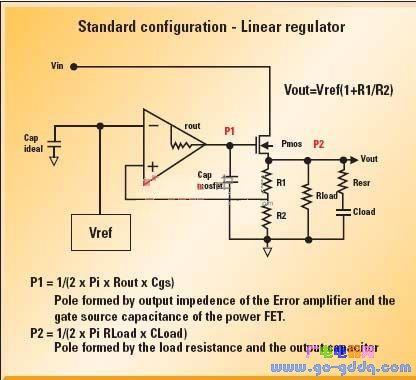LDO linear regulators are commonly used by design engineers during the development process, especially in later stages of product design. While these engineers focus on making complex baseband (BB) or radio frequency (RF) ASICs function properly, they often overlook the detailed power and performance characteristics of their chosen linear regulator.
When selecting a linear regulator, engineers typically rely on the main specifications listed on the data sheet's cover rather than the more critical parameters that are buried within the details. These specifications can be misleading because they only highlight the most common parameters without considering other important factors like load conditions, temperature ranges, and connection configurations. For instance, ground current is a parameter that is often overlooked but plays a crucial role in system performance. The competitive nature of the market has led manufacturers to simplify information presentation, which sometimes causes confusion among engineers when comparing different devices.
Modern linear regulators come with advanced architectures designed to meet challenging application requirements. At its core, a linear regulator functions as an operational amplifier combined with a pass transistor. The op-amp uses two reference points: an internal bandgap reference and a resistor divider at the output. During regulation, the voltage across the resistor divider is compared to the bandgap reference, allowing the system to adjust the pass transistor's conduction accordingly.
This closed-loop system features two main poles: one from the internal error amplifier and pass transistor, and another from the external output load and the ESR of the output capacitor. Managing these poles is essential for ensuring the stability and overall performance of the regulator (see Figure 1).

Figure 1
Linear Regulator Classification
One of the key goals for modern design engineers is to improve efficiency, which translates into lower quiescent current (Iq) and reduced forward voltage drop. However, as manufacturers enhance standard performance, this often leads to trade-offs in other areas such as thermal management and noise levels.
Universal linear regulators are designed to deliver balanced performance across a wide range of applications. However, the performance metrics are often interdependent, meaning that optimizing one feature may negatively impact another. Additionally, packaging choices are usually driven by cost considerations and market acceptance, which limits the flexibility for specialized designs.
Digital linear regulators are specifically developed to support the digital core of a system. With the increasing demand for high-performance microcontrollers and DSPs, these regulators must offer fast response times and higher current capabilities to meet the needs of modern embedded systems.
Ring Common Mode Inductor,UU Common Mode Inductor,Vertical Plug-in Common Mode Inductor,Power Line Common Mode Choke
Xuzhou Jiuli Electronics Co., Ltd , https://www.xzjiulielectronic.com